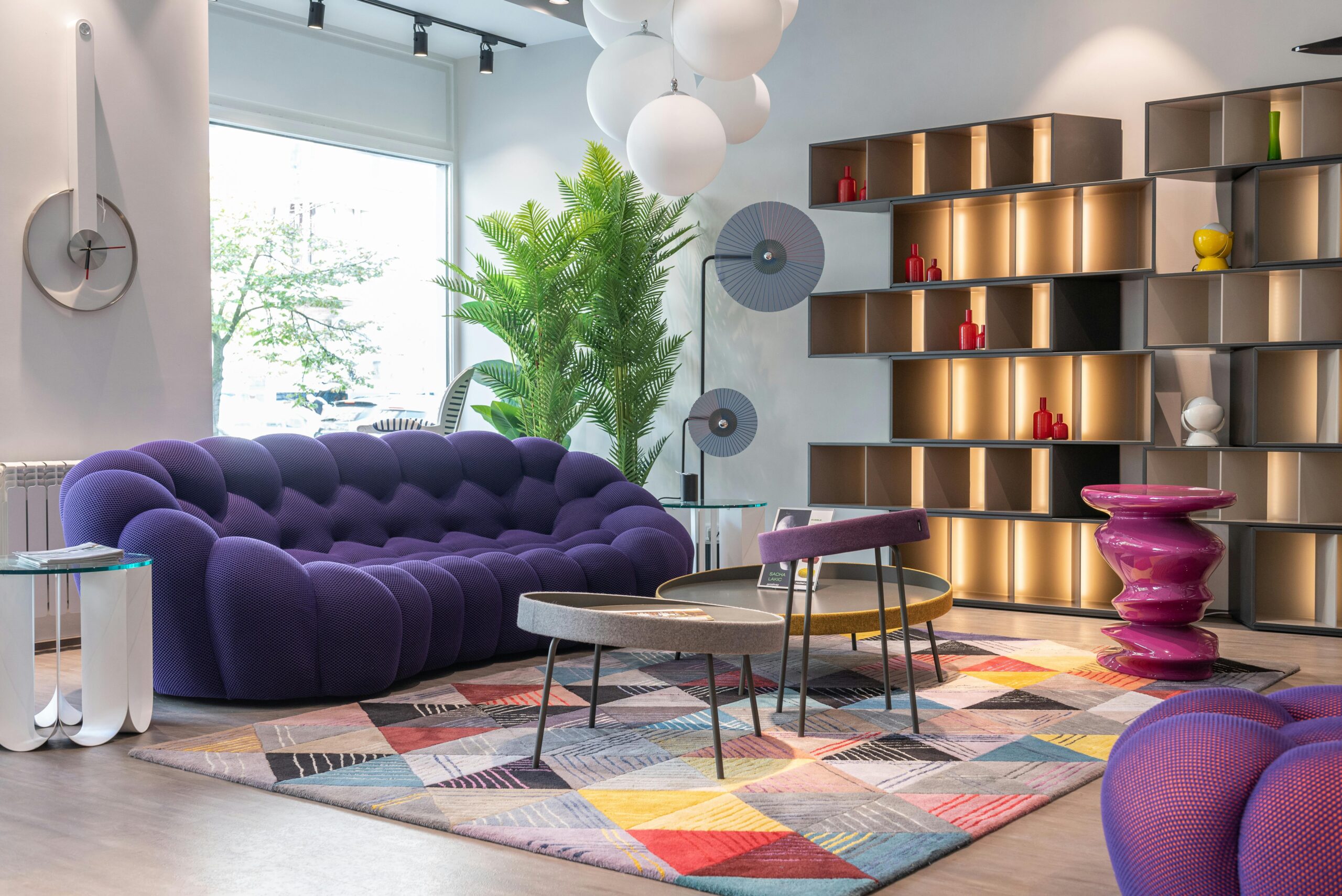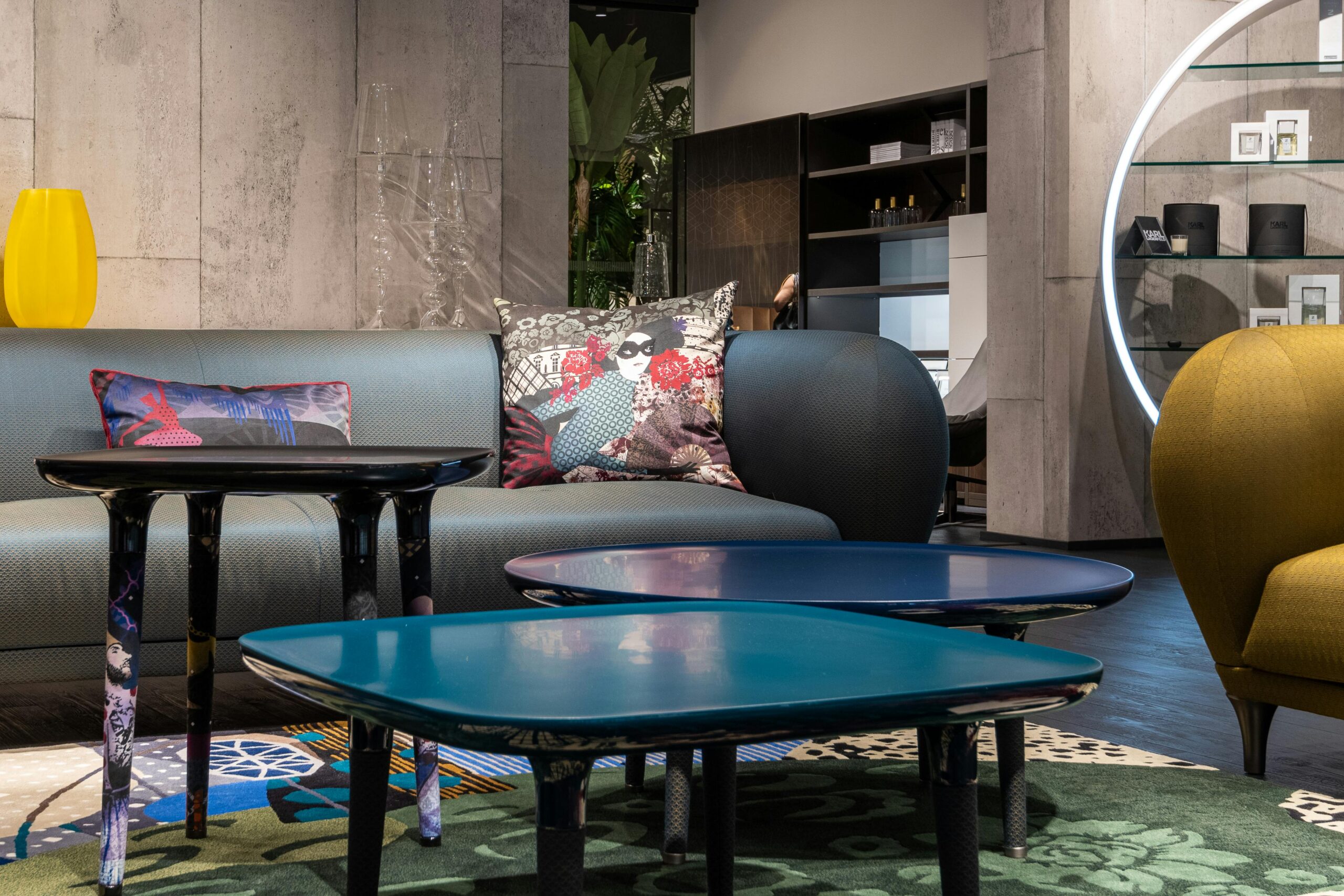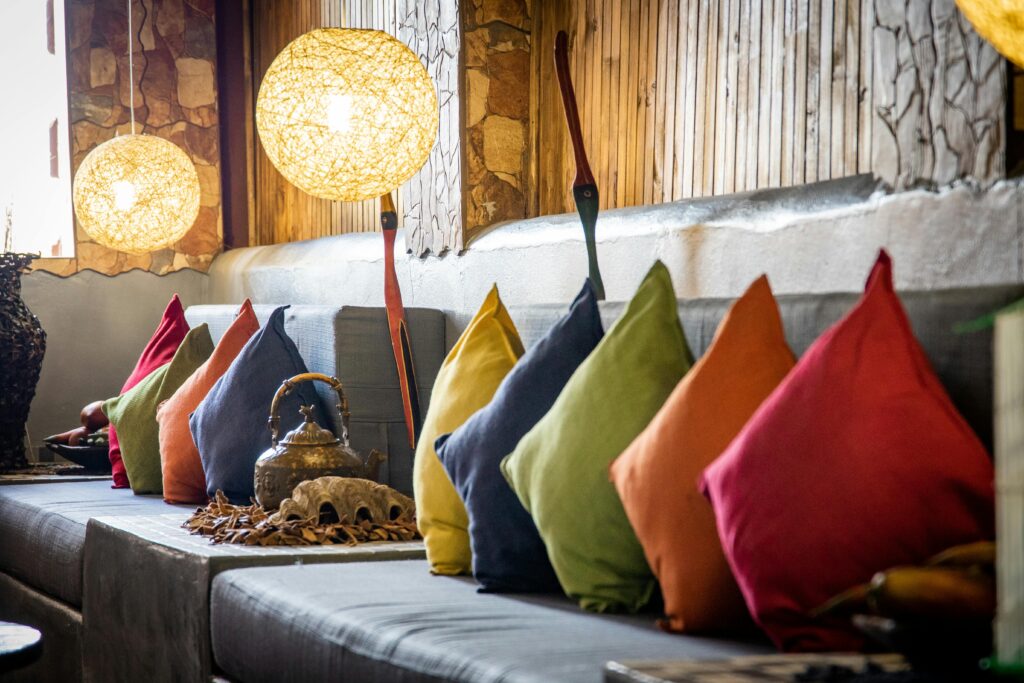Something is shifting in the interior design world right now. After years of minimalist beige, curated perfection and Scandi restraint, people are turning inward and asking one simple question: Does this make me feel good?
People have begun to crave comfort and fun in their homes. Nostalgia and joy are necessities for creating a home that’s more than just a place to live, especially in such a chaotic and somewhat scary world. A home that works as a sanctuary, time capsule, and sometimes even a mood boost is incredibly important.
Why Joyful Design is Trending?
This isn’t just a fleeting trend; it’s a collective craving. From dopamine decor to playful patterns, there is a renewed focus on interiors that evoke an emotionally uplifting feel. People want their spaces to reflect more of them, not just what’s trending on Pinterest.
The pandemic played a part, encouraging people to make their homes more nurturing and expressive. Now, the rise of TikTok aesthetics like “cluttercore,” “indoorphins,” and “kidcore” shows that feel-good design isn’t just about style, it’s about heart.
What Does Joy Look Like at Home?

Joyful design is personal. For some, it’s a gallery wall of holiday snapshots; for others, it’s patterned wallpaper that reminds them of their nan’s dining room. It’s not prescriptive, but there are a few defining elements.
- Comfort-first furnishings: Think deep-seated sofas, reading nooks, and cushions that look like they’re hugging you back.
- Sentimental objects: Childhood artwork, heirloom ceramics, or a framed record of your favourite teenage album.
- Nostalgic patterns and colours: From 70s florals to 90s pastels, vintage palettes are making a comeback; not just because they’re pretty, but because they make us feel.
- Whimsy and play: Interiors that aren’t afraid to have fun. Think scalloped lampshades, checkerboard rugs, or smiley face motifs.
How to Design a Joy-Centred Home
Prioritise Feeling Over Formula: Start with how you want your home to feel. Energised? Cosy? Uplifting? Then layer in design choices that reflect that mood, from the textures underfoot to the colour on the walls. There’s no need to follow strict design rules. If you love it, it belongs.
Play With Colour Psychology: Colour has a powerful impact on emotion. Yellows and oranges can energise and lift spirits. Blues and greens bring calm and clarity. And don’t underestimate pink! It’s warm, nurturing and makes a space feel more emotionally open. Even small doses, like a painted door frame or a coloured tile backsplash, can make a big difference.
Reconnect With the Past: Nostalgia plays a starring role in joy-based design. Think back to childhood homes, favourite holidays, or family rituals. Could a candy-striped tablecloth bring back Sunday breakfasts? Or a velvet armchair that recreates the comfort of grandma’s lounge? Vintage shopping is perfect for this. Not only are retro pieces full of character, they’re also often more sustainable than buying new. Bonus points for items with a story.
Curate Meaningful Moments: It’s the little things that bring joy day to day. A curated record corner. A hallway gallery of your favourite quotes. A bookshelf colour-coded not for looks, but for how the titles make you feel. These details don’t just decorate; they reflect your life, your values, and your memories. Consider areas that might otherwise feel forgotten, too. Under-stairs nooks, kitchen windowsills, even bathroom shelves are perfect places to inject a playful or personal touch.
Choose Comfort-Boosting Materials: Cosiness goes beyond cushions. Flooring plays a subtle but significant role as well. Think warm wooden herringbone underfoot, plush rugs in social spaces, or even luxury vinyl tiles with a soft-touch finish. Natural materials like wool, cork and oak not only feel good, they often age beautifully too. Upholstery and window dressings matter here too. Soft velvets, boucle textures, and linen blends are all winners in the joy-comfort equation.
Design for You

At the end of the day, designing a joyful home isn’t about aesthetics; it’s about alignment. With memories. With comfort. With daily rituals. The trend towards happiness-first interiors is a reminder that homes should serve the people who live in them, not just impress the people who visit.
So, embrace the nostalgic, lean into comfort, and fill your space with things that make you smile. Because joy might just be the most enduring design principle of all.

